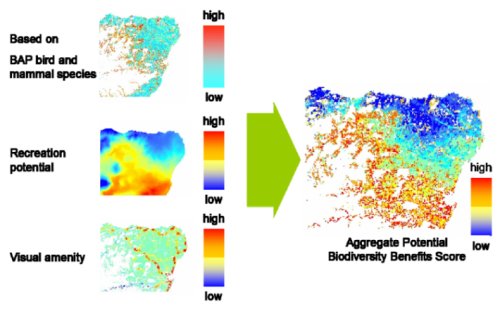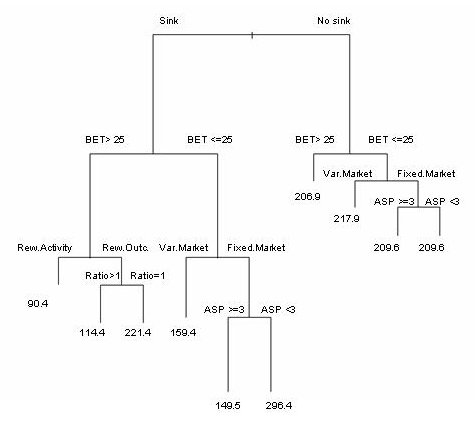Understanding the wider influences of management and policy on biodiversity change
Our approach is based on various methods for exploring biodiversity in the context of various influences on behaviour, using GIS and agent-based modelling.
Landscape Multi-Functionality
We have developed methods to spatially characterise landscape multi-functionality which allow characterisation of biodiversity within the context of other ecosystem services that landscapes might need to deliver, such as recreation and visual amenity. A test run in NE Scotland showed that there are win-win areas of land able to deliver multiple ecosystem services; identification of these areas could be used to target policy incentives (e.g. afforestation schemes, SRDP) more effectively. (Gimona and van der Horst, Landscape Ecology 2007; van der Horst and Gimona, Biological Conservation 2005)

Contact
Sources and Sinks
We have used a coupled agent-based and stochastic metacommunity model to explore the influence of policy on species conservation in the context of sink habitats and influences on managers’ decisions such as farm running costs (BET), aspirations (ASP), and market variability. (Gimona et al. Sources, Sinks and Sustainability, in press)

Comparison of influences on survival time for one species in a stylised scenario.
Contacts
|